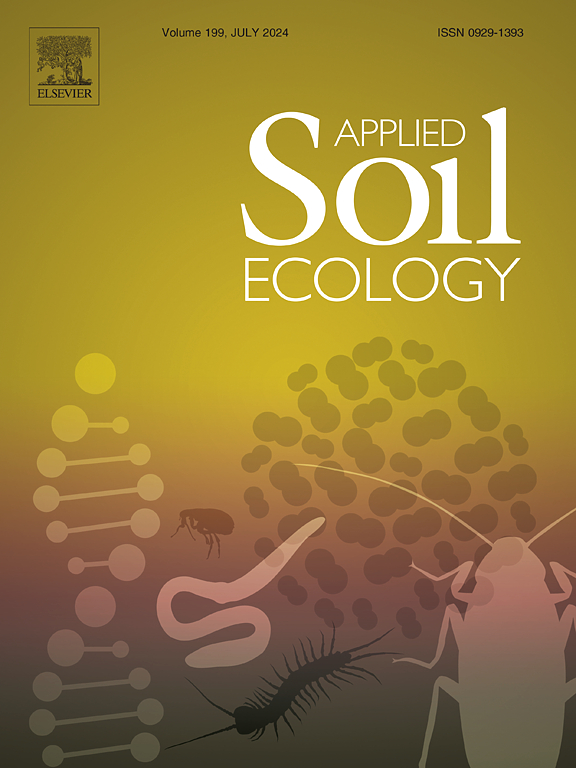Regulation of fertilization on the genes encoding microbial carbohydrate-active enzymes and their roles in accumulating and decomposing organic carbon in Ultisol
IF 4.8
2区 农林科学
Q1 SOIL SCIENCE
引用次数: 0
Abstract
The decomposition and accumulation of soil organic carbon (SOC) relate closely to the emission of greenhouse gas and the improvement of soil quality. However, the impacts of fertilizations on the genes encoding microbial carbohydrate-active enzymes (CAZymes) and their roles in decomposing and accumulating SOC are still unclear. The accumulation and dynamic of microbial residue carbon (MRC) and the mineralization of SOC in the soil treated with no fertilizer (CK), chemical fertilizer (NPK), combination of chemical fertilizer and straw (NPKS), and pig manure (AM) for long-term were observed in this study. The CAZymes, microbial community, phospholipid fatty acids (PLFAs), extracellular enzyme activities in soils were also investigated. The content of MRC and the cumulative amount of SOC mineralization were stimulated by fertilizations, especially AM treatment. Fertilization treatments increased the abundance of the special CAZymes including GH3, GH51, AA3, AA6, GH16, GH18, GH20, with a significant peak at AM. The accumulation of MRC was significantly positively correlated with the abundance of CAZymes encoding plant-derived components, the abundances of these genes were also positively correlated with microbial PLFAs (P < 0.05). The mineralization of SOC was significantly positively correlated with the CAZymes encoding both plant- and microbial-derived components. The activities of specific enzymes (β-1, 4-glucosidase and β-1, 4-N-acetyl-glucosaminidase) were also closely related to the abundance of CAZymes (P < 0.01). Therefore, the regulation of fertilization on the CAZymes for the degradation of different carbon source probably impact the synthesis of microbial biomass and the activity of enzymes, and then result in the alterations of SOC accumulation and dynamics.
求助全文
约1分钟内获得全文
求助全文
来源期刊

Applied Soil Ecology
农林科学-土壤科学
CiteScore
9.70
自引率
4.20%
发文量
363
审稿时长
5.3 months
期刊介绍:
Applied Soil Ecology addresses the role of soil organisms and their interactions in relation to: sustainability and productivity, nutrient cycling and other soil processes, the maintenance of soil functions, the impact of human activities on soil ecosystems and bio(techno)logical control of soil-inhabiting pests, diseases and weeds.
 求助内容:
求助内容: 应助结果提醒方式:
应助结果提醒方式:


